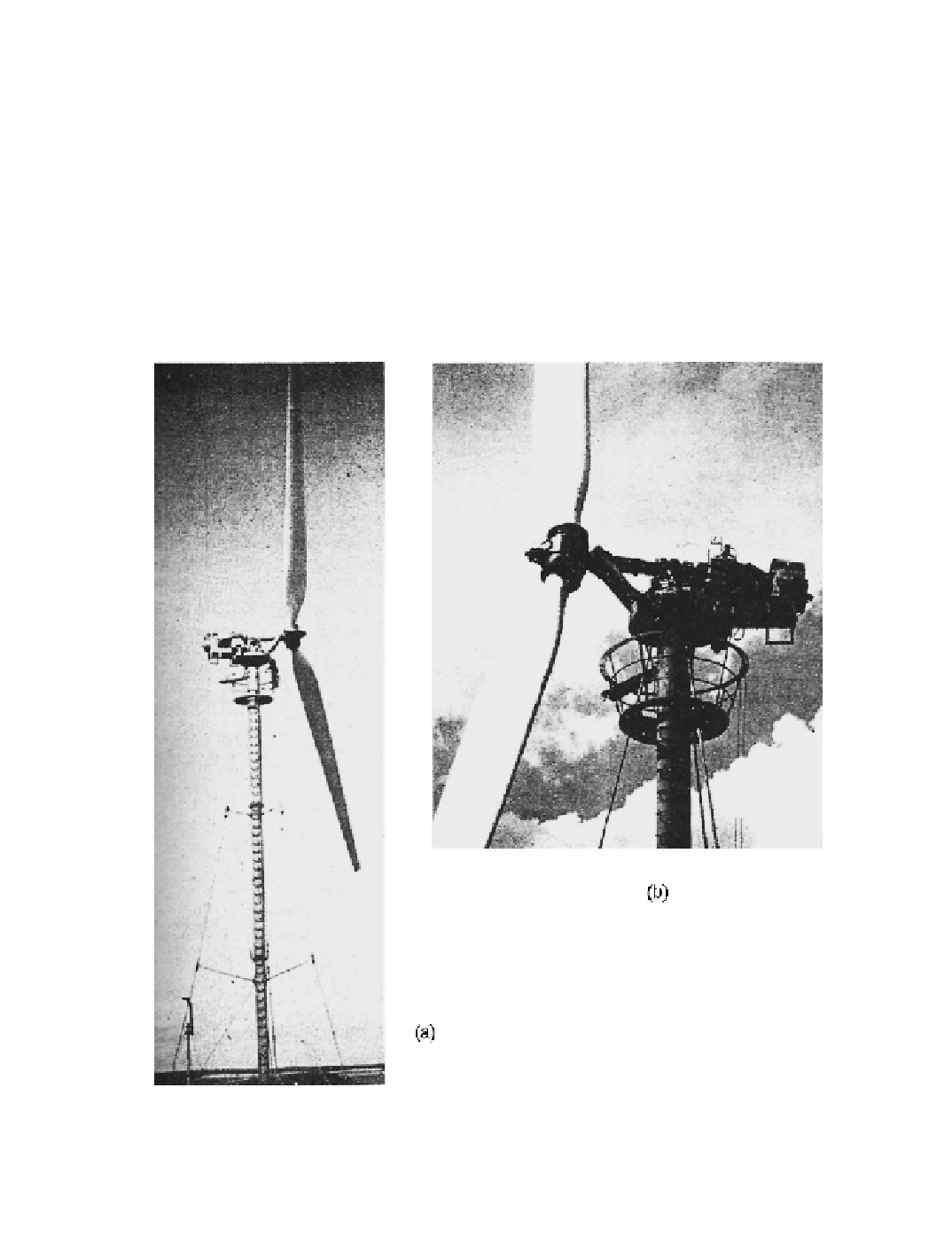Environmental Engineering Reference
In-Depth Information
Germany
Wind turbine activities in Germany resumed after World War II, based on earlier tests
at Weimar of
Ventimotor GMBH
wind turbines (8 m and 18 m in diameter), and continued
through the '50s and '60s under the guidance of Professor Ulrich Hütter [Hütter 1973a].
During the 1950s Hütter developed and tested a 10-kW,
10-m Hütter-Allgaier
HAWT. In
the early '60s this work culminated in the 100-kW
34-m Hütter-Allgaier
wind turbine,
shown in Figure 3-7 [Hütter 1973b, 1974], the most technologically advanced system of its
time and for decades to follow. Hütter concentrated on pushing the state of rotor technol-
ogy toward lower solidity, higher tip speed, and lexibility. The 34-m rotor had two blades
with full-span pitch control and very low solidity. These slender, lexible blades were con-
structed of iberglass and mounted on a
teetered hub
. The rotor was downwind of the
tower and incorporated 7 deg of coning. Because of very limited funding, experiments on
this turbine proceeded slowly into the 1960s, hampered by lutter problems in the long, thin
rotor blades.
Figure 3-7. The technologically-advanced 100-kW 34-m Hütter-Allgaier wind turbine.
(a) General view of the turbine mounted on its 22.3-m guyed shell tower. (b) View of the
iberglass blade roots, teetered hub, and in-line power train. [Hütter 1973b, 1974]

Search WWH ::

Custom Search